In May 2018. We were approached by a client with a problem: a yacht is in the port, half of the automation is out of order, it is leaving for the voyage, but many systems have to be controlled manually. For us, such a task was, to put it mildly, not a standard one. We made many different control and monitoring systems, new and restored old ones, but within the framework of buildings and industries, and here is a ship.
Spoiler alert: there is no fundamental difference between the onboard systems of the ship and the engineering systems of the building.
The task seemed interesting. The controllers on which the automation was made were more or less familiar to us, at least we had an understanding of how to work with them and there was the necessary software. The port was located not far from the office, the next day we went to the yacht and conducted a survey of what was out of order
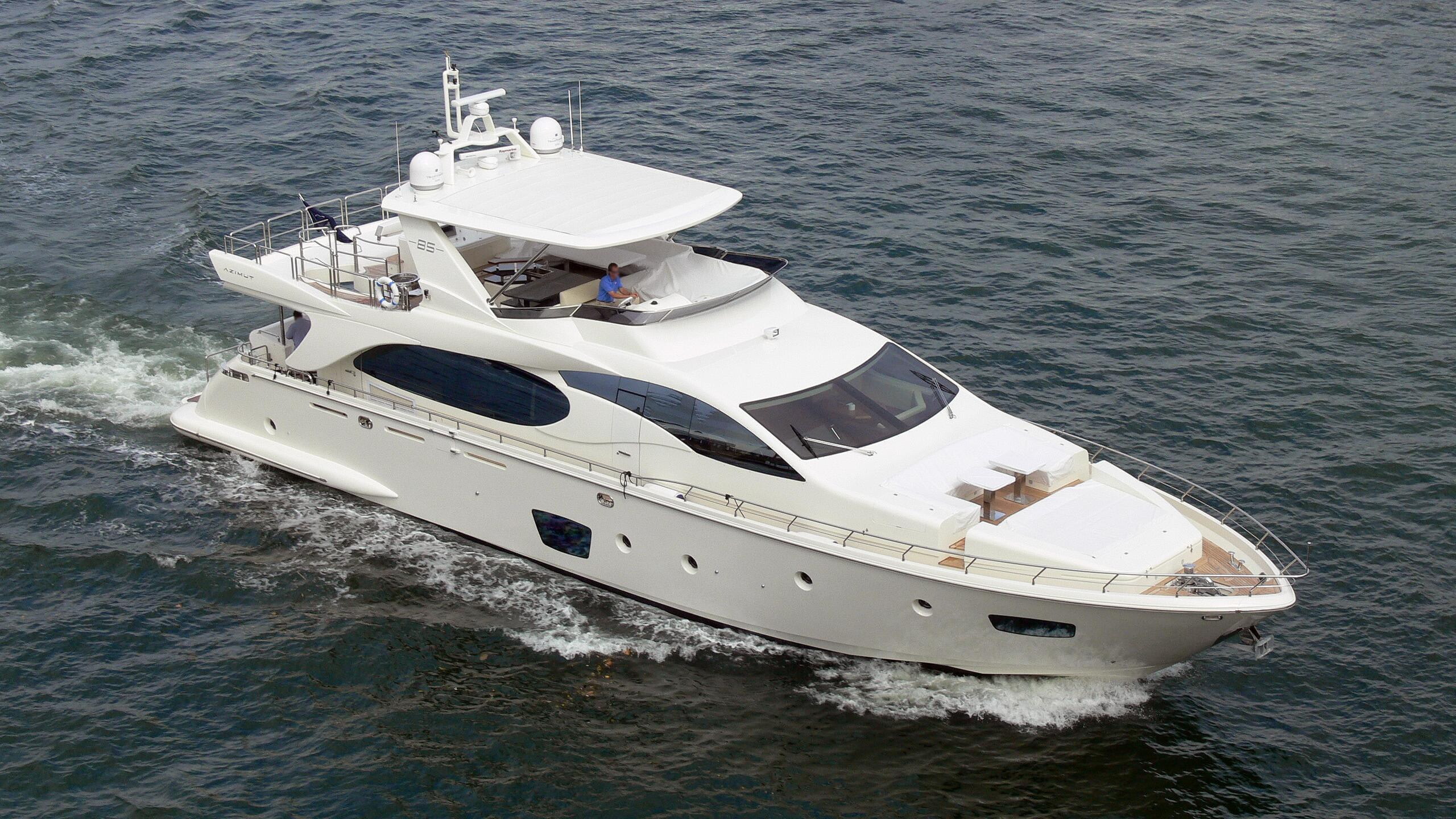
. .
The yacht Italian, built in 2007, is equipped with many engineering systems for life support and passenger comfort. There is a large control room on the lower deck with basic controls and a small control cabinet under the wheelhouse. Here and there are controllers responsible for automatic control, which are connected to the on-board computer. From a programmer's point of view, we have 2 Wago controllers with a set of expansion modules that collect and process data from all systems and transmit them to the upper level - a scud, which is installed on an embedded PC running a heavily cut Windows XP. Of course, there are no source codes for the software, it's not even clear at all what kind of scada it is, most likely something self-written by the Italians. There is no program for the controller either. There were some electrical diagrams for the cabinets themselves and the piping,in Italian, in places they helped. The whole problem turned out to be that the controller in the main cabinet ordered to live long.

On the left is the controller itself, the CPU, there is all the logic and algorithm. And there are about 30 expansion modules to it.
In general, it was clear what to do. The "trap" plan: we revive the controller, take out the program, fill it in a new one, put it in place and everything works - it didn't work, the controller did not come to life, and it would not have been possible to pull out the program, since the internal flash drive failed. We went the long way, replaced the controller, after that translating the circuits from Italian, simultaneously ringing all the contacts, identifying which inputs are responsible for what. This is a very drudgery and time-consuming job, especially in a very tight space.
The hardest part was to "make friends" the new program with the existing scud. Scud is completely closed, there is not even an OPC server, it communicates with the controller via the Modbus TCP / IP protocol, and how exactly it does this is not clear. We used the Wireshark program to "eavesdrop" on which requests and to which addresses the computer sends to the controller, after which we simulated the controller's responses to find out how the scada interface would react to them. It is a very delicate, delicate and time-consuming job to select variables in order to write a program for them later. All external addressing of the algorithm must completely match the old program for the on-board computer to work exactly the same as before.
As a result, we coped with the task, it turned out to restore everything, it took about two months. We helped out the guys a lot and made their swimming easier. At the cost of the work, they earned good money, but did not become impudent. As we were later told, the yacht manufacturer for such repairs requested a cost about 20-30 times higher than ours, this is taking into account the departure and accommodation of their programmer.
Since everyone was satisfied with the result, I offered the client an upgrade next year: completely replace the on-board computer and add new systems there. We managed to convey the idea that in the long term it is economically justified and profitable, that after the upgrade they will have all the software on hand and they will be completely independent of the manufacturer and will no longer get into such a situation. Having the source codes, if the automation element fails, the client changes it and reloads the program, while losing a couple of days and about 15 tr for the programmer's exit and loading the program. And if you organize spare parts for the main equipment on board, then such problems can be completely eliminated.
To existing yacht systems:
- lights and lights,
- Ventilation and air conditioning,
- water supply and sanitation,
- pumps, tanks with fuel and process fluids,
- generators, power supply, batteries,
add new ones:
- lighting in cabins,
- bugle,
- wipers,
- hatches.
We will install a new touch panel instead of the old computer, update the interface, add the Russian language and update the program on the existing controllers so that we have all the sources. We drew up a commercial proposal for these works, agreed and in 2019 started modernization.
Instead of a computer, we put a Weintek MT8121XE touch panel, 12 inches and a resolution of 1024x768. The screen is resistive, but it is suitable for our purposes. Good brightness and viewing angles.
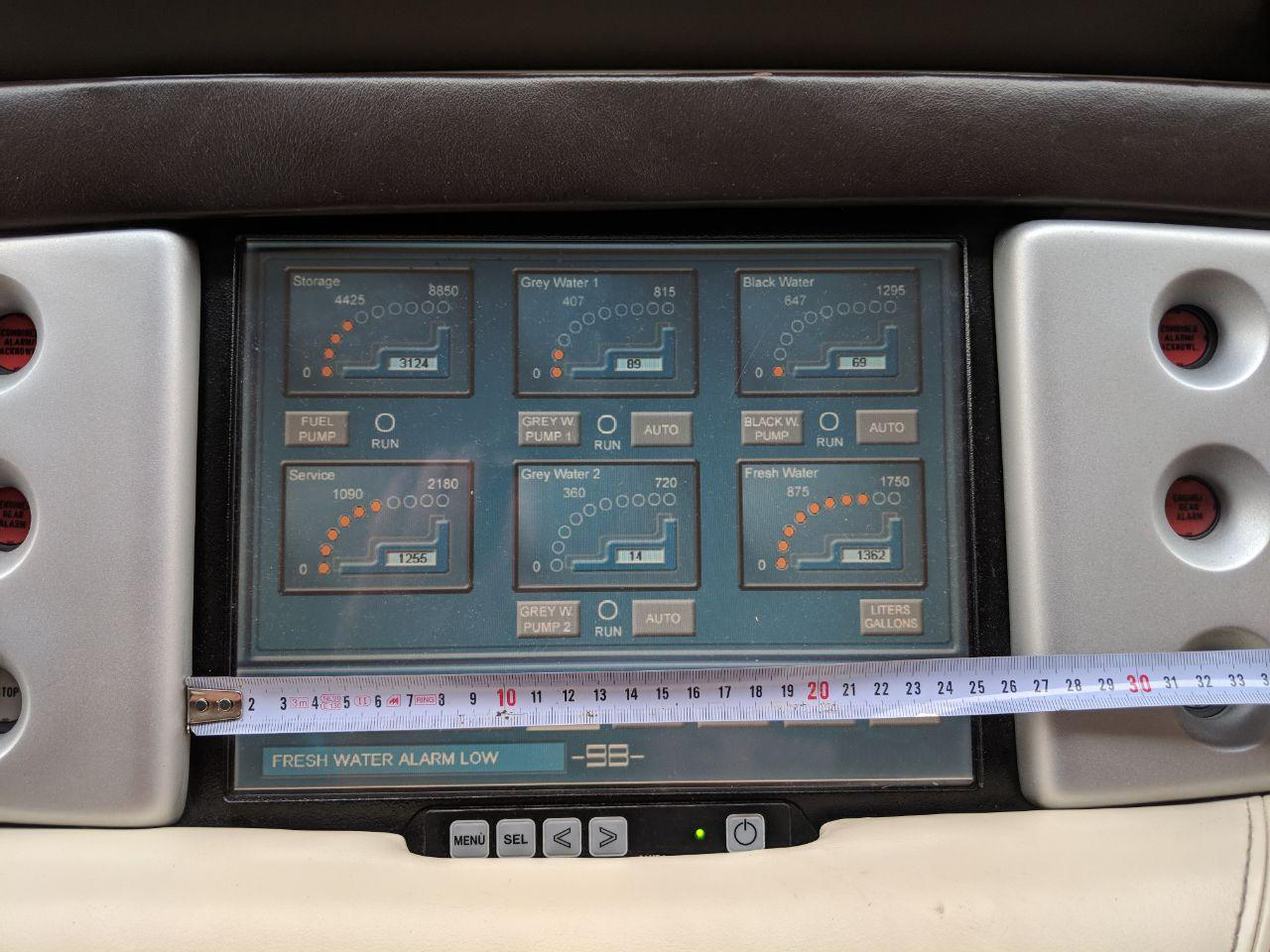
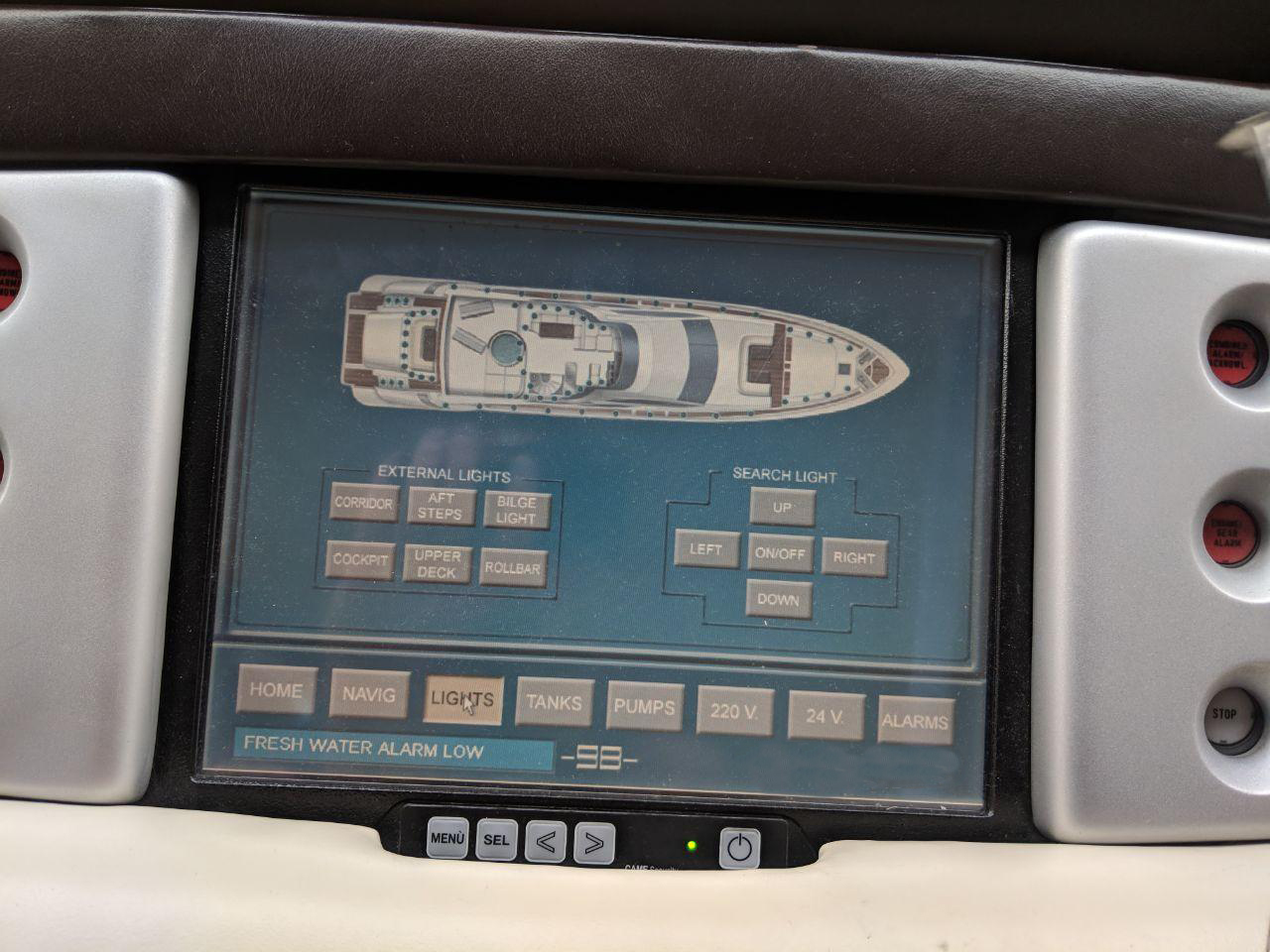
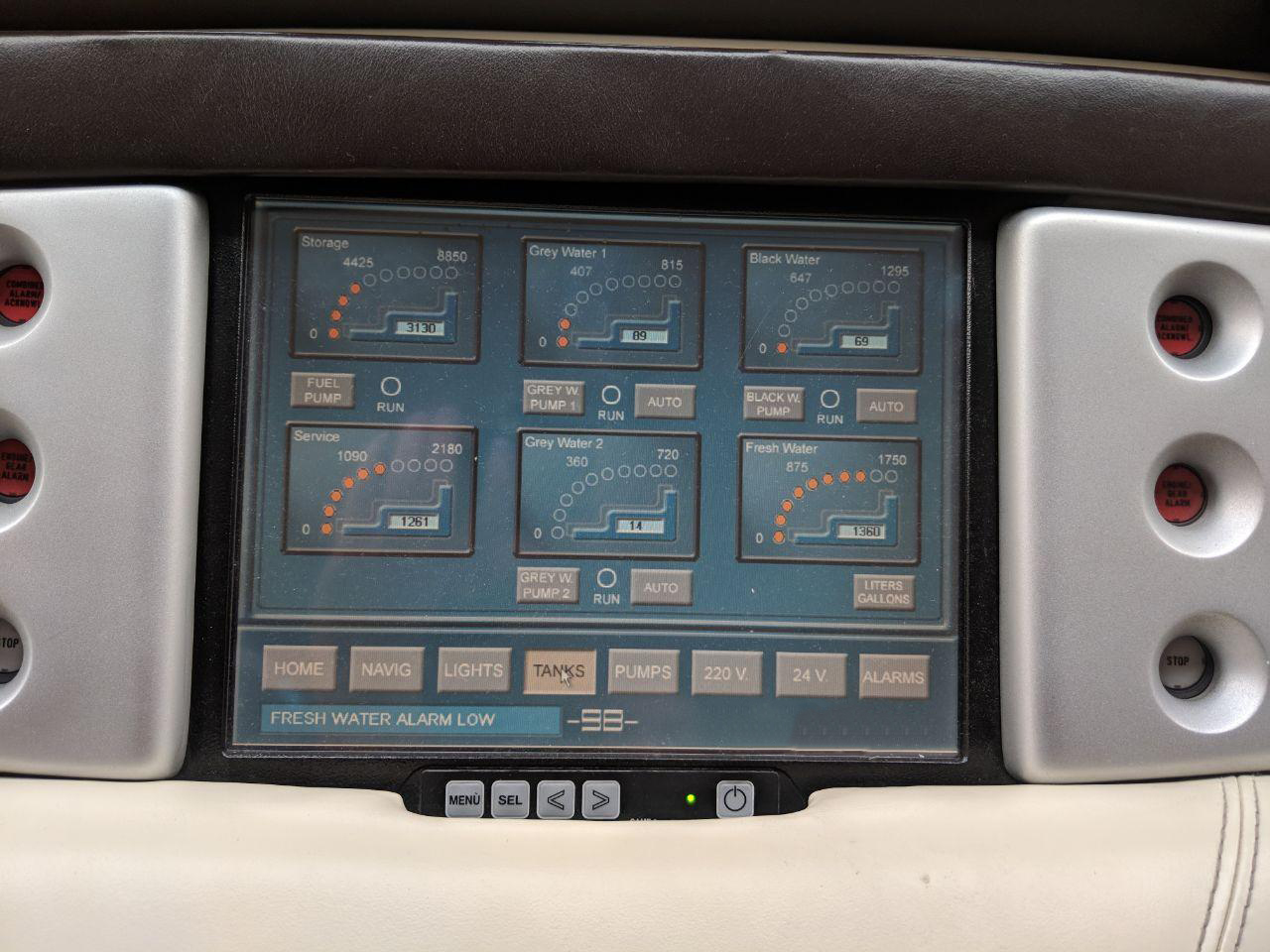

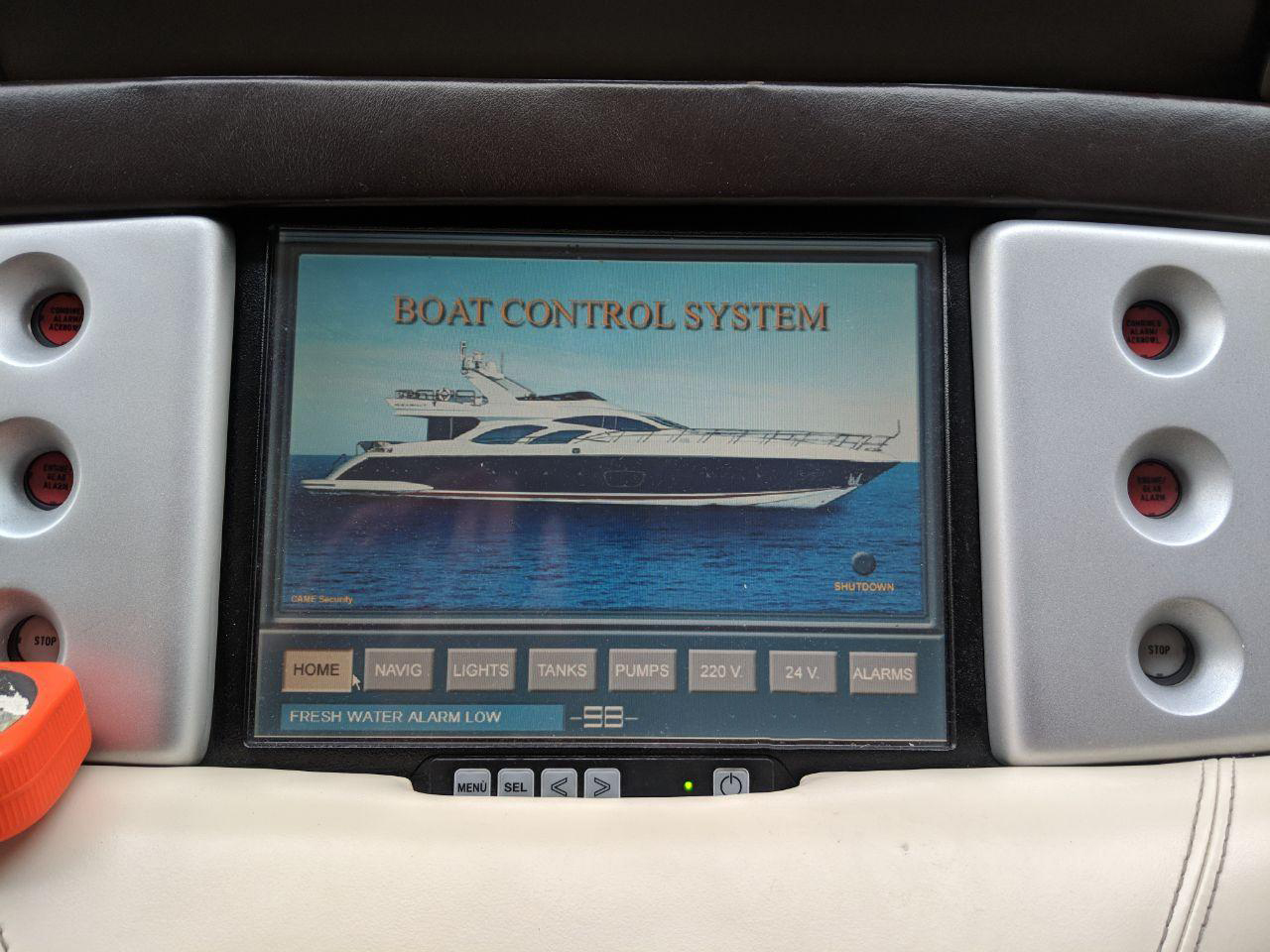
This is what the interface of the on-board computer looked like. To be honest, I really like it, everything is very specific and understandable, nothing superfluous, all the information is perfectly readable. Yes, a little outdated, but this is 2007. Pay attention, the interface is made in dark colors. We have been using the dark theme in engineering systems for a very long time. The reason is not that it is fashionable and modern, but that the interfaces are used in the dark or in dimly lit rooms. Although from this year they began to make light interfaces too, I will write a separate article about this and tell you what I think about it.
So, we immediately ordered the panel to our office so that there was time to test it even before the yacht sailed from wintering. The interface was developed for a very long time, since the usual developments for our dispatching systems did not fit here at all. The toggle switches were re-sized, they should be large so as not to miss a finger, but not too large so as not to take up a lot of space. We made navigation through the windows at the bottom, and the line of emergency messages at the top, otherwise, when the user flips through the windows with his finger, his hand closes the entire screen with information. Although, by default, in most scada systems, navigation is located at the top of the screen.
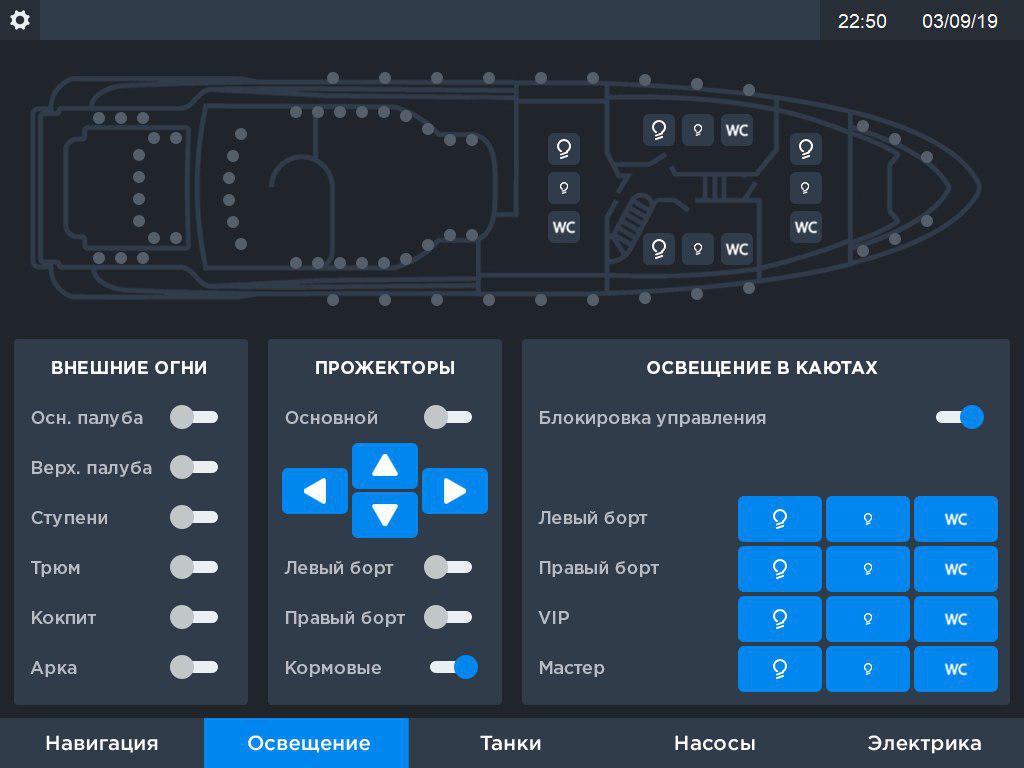
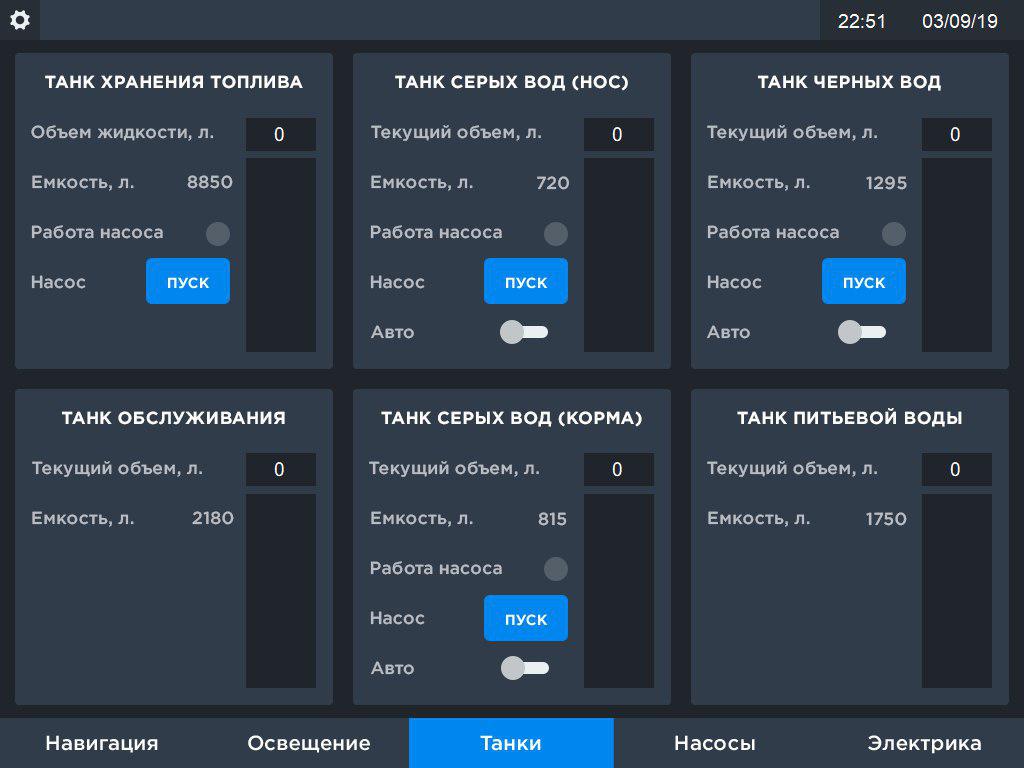

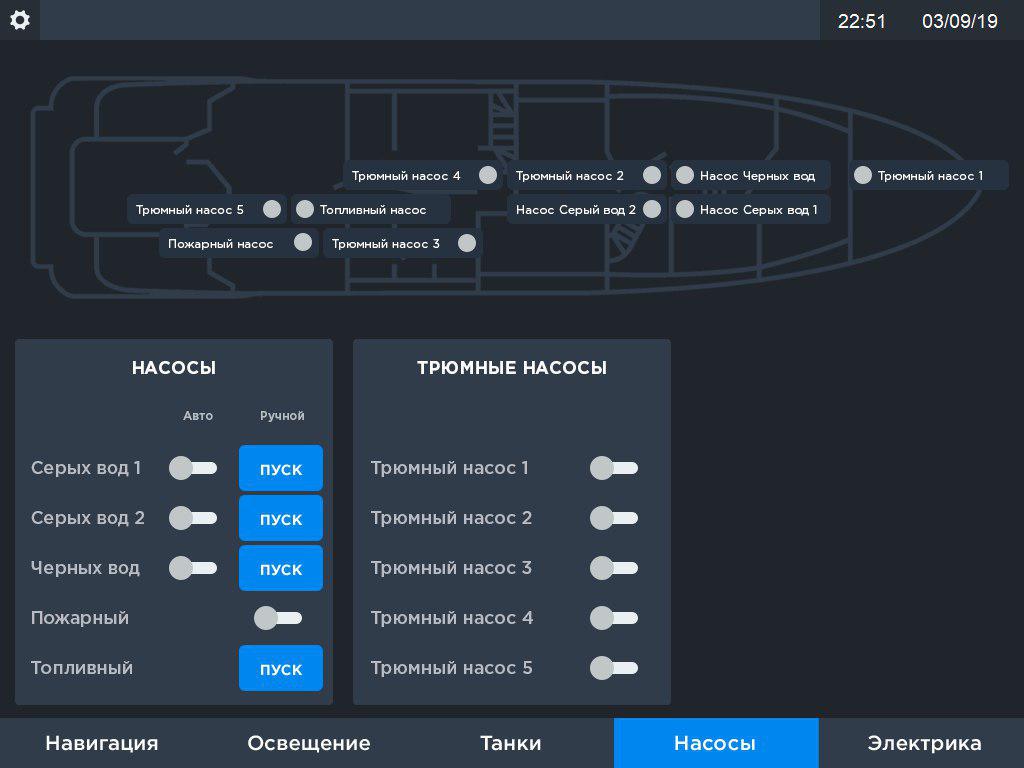
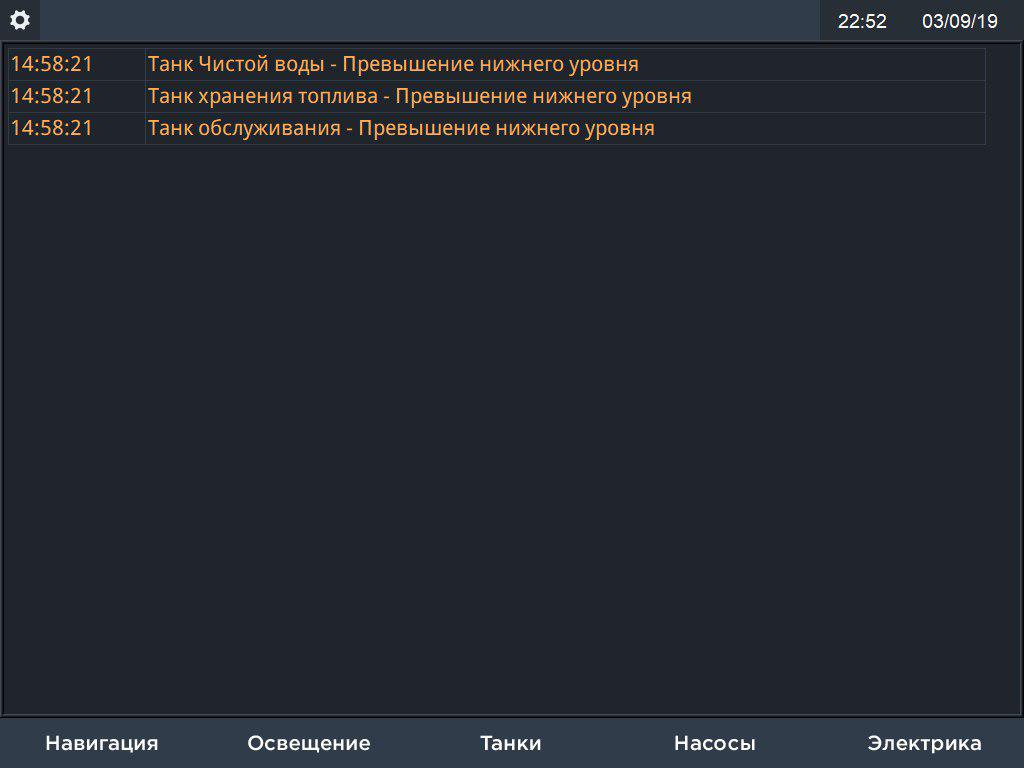
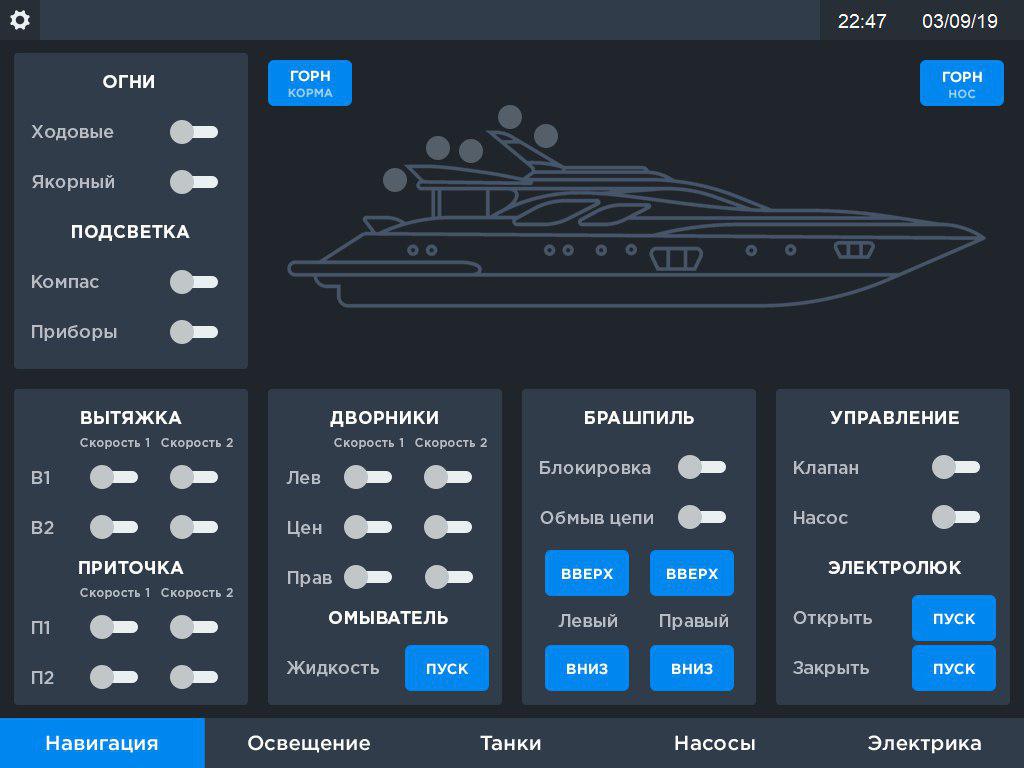
It takes a lot of time to arrange information on screens. The screen should not be overloaded with information, the text should be well readable, there should not be large spaces and empty spaces.
The development environment for the panel is very flexible and functional, but nevertheless, the entire background was drawn in Photoshop, only variables and buttons were left in the development environment, this significantly increased the screen loading speed.
Additionally, we made a light theme, since during the day, in the light of the sun, information from a dark screen was not read well enough.
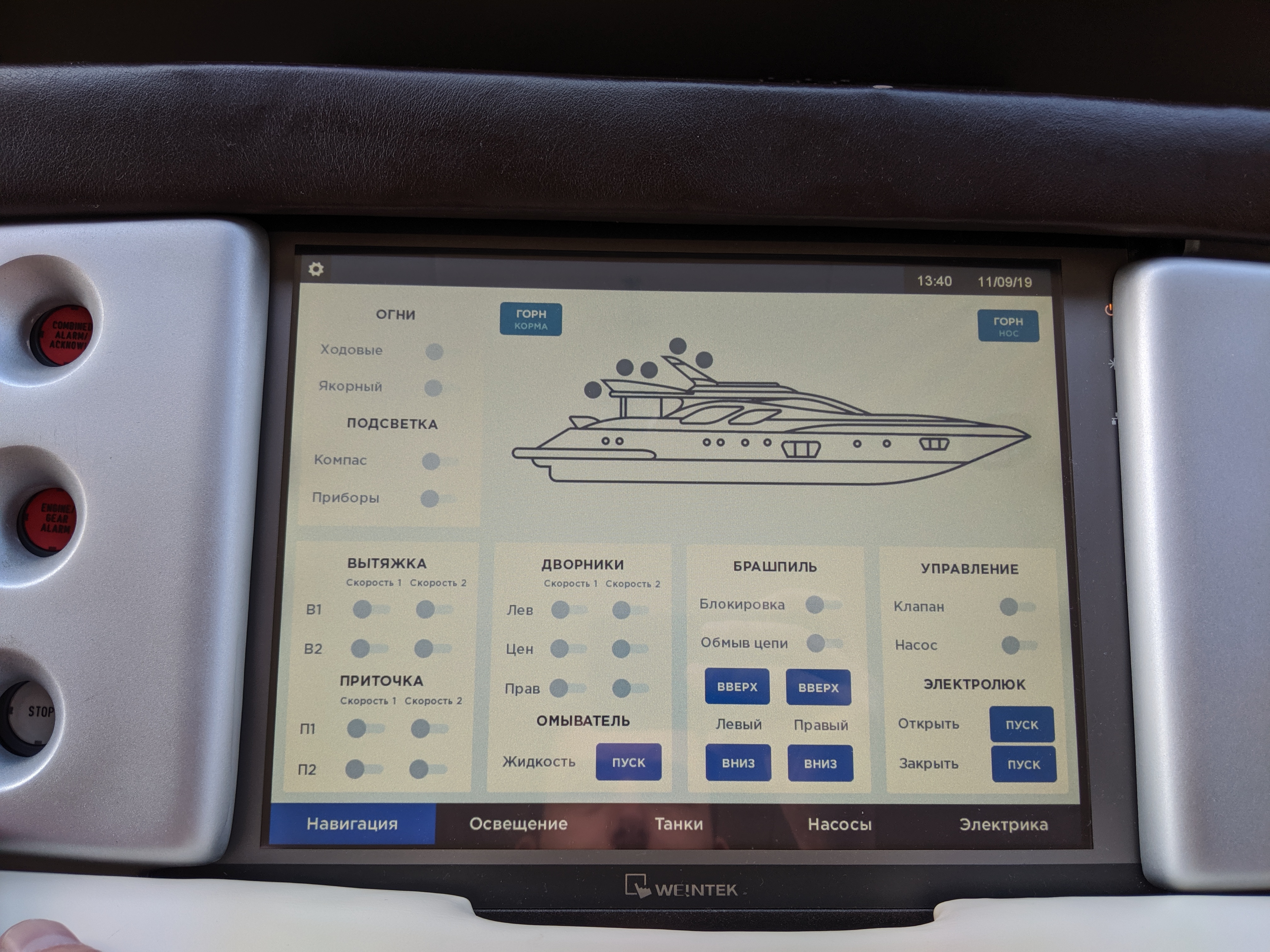
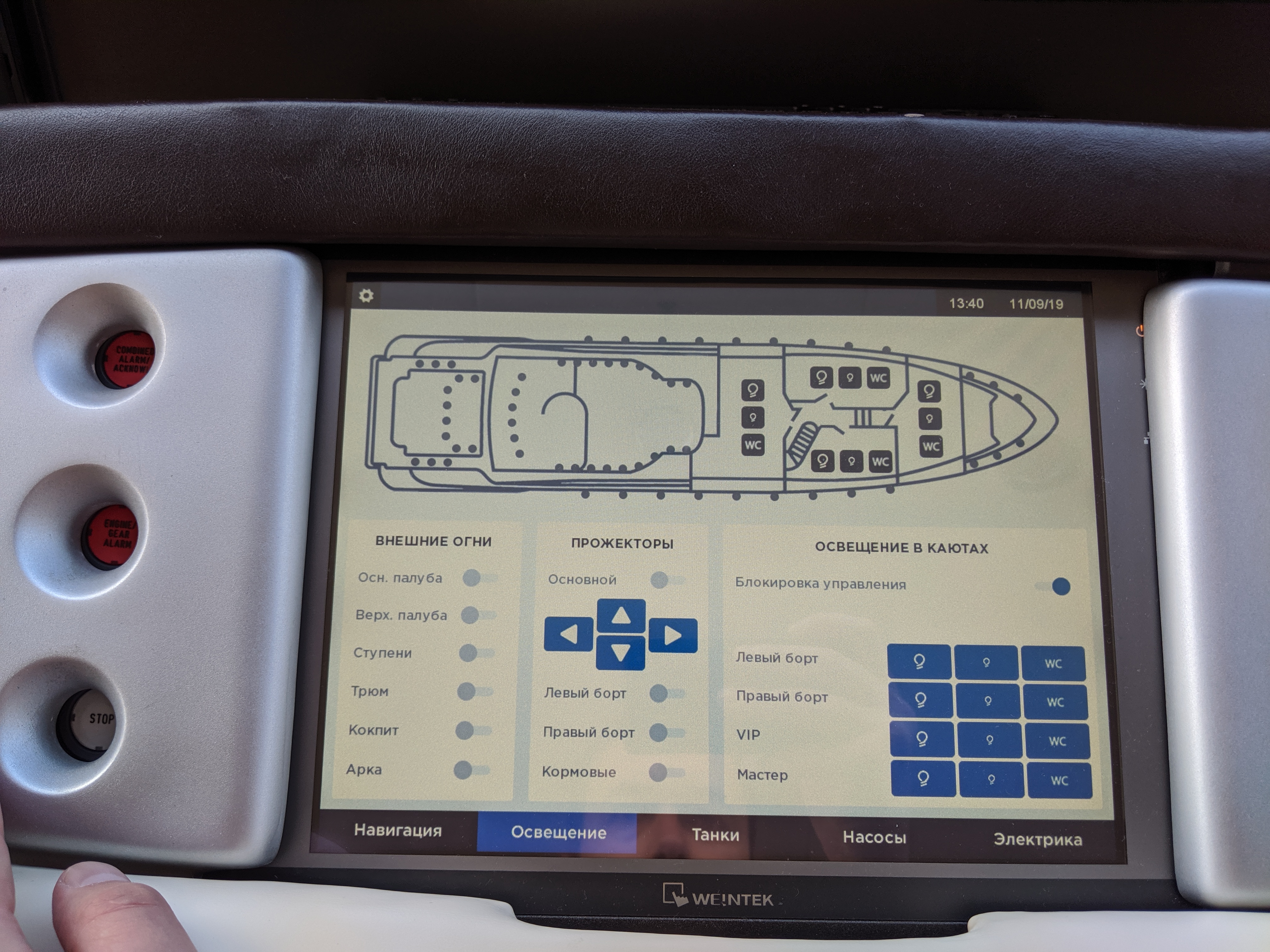
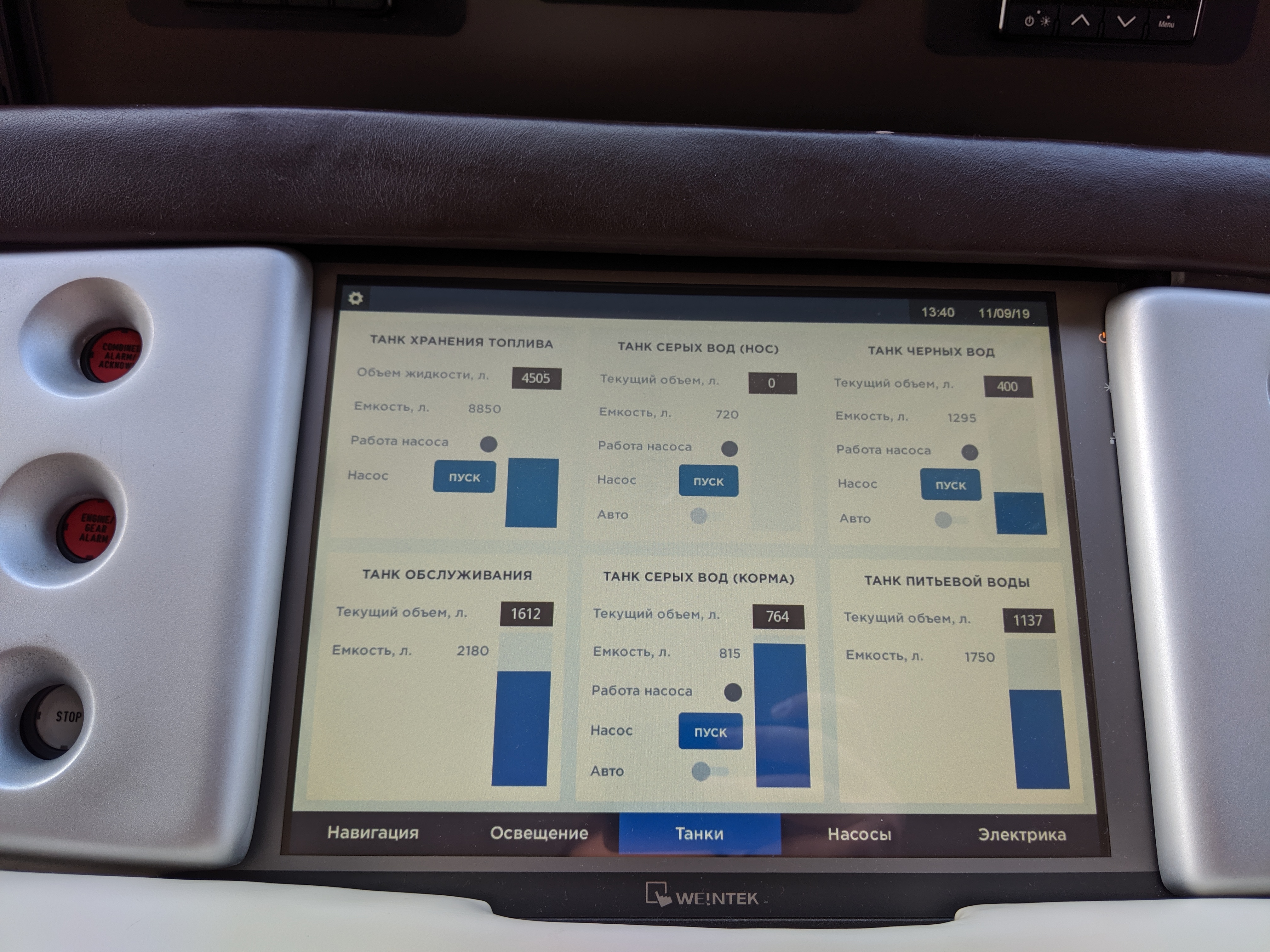
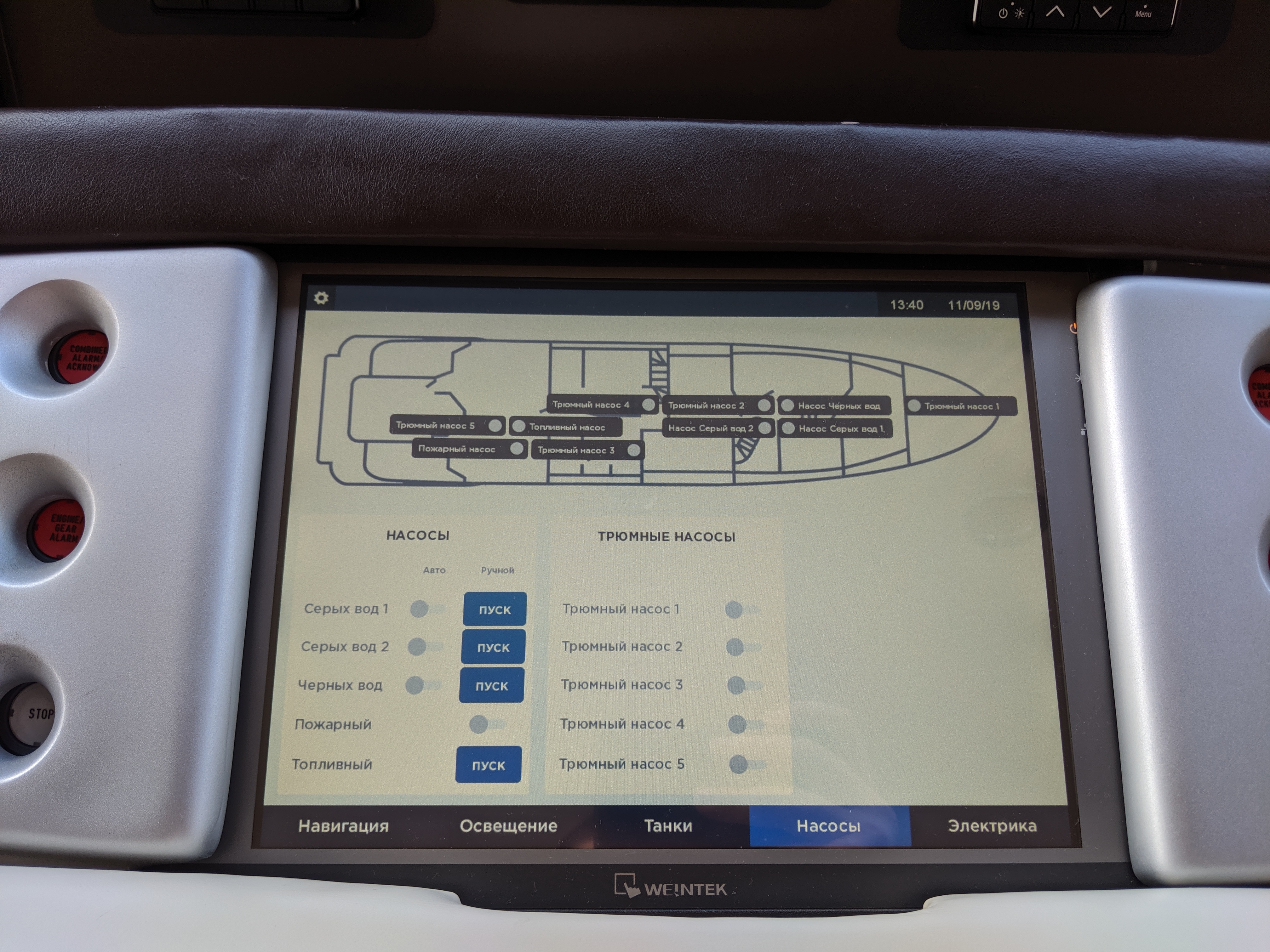
After that, all this was also duplicated in English.

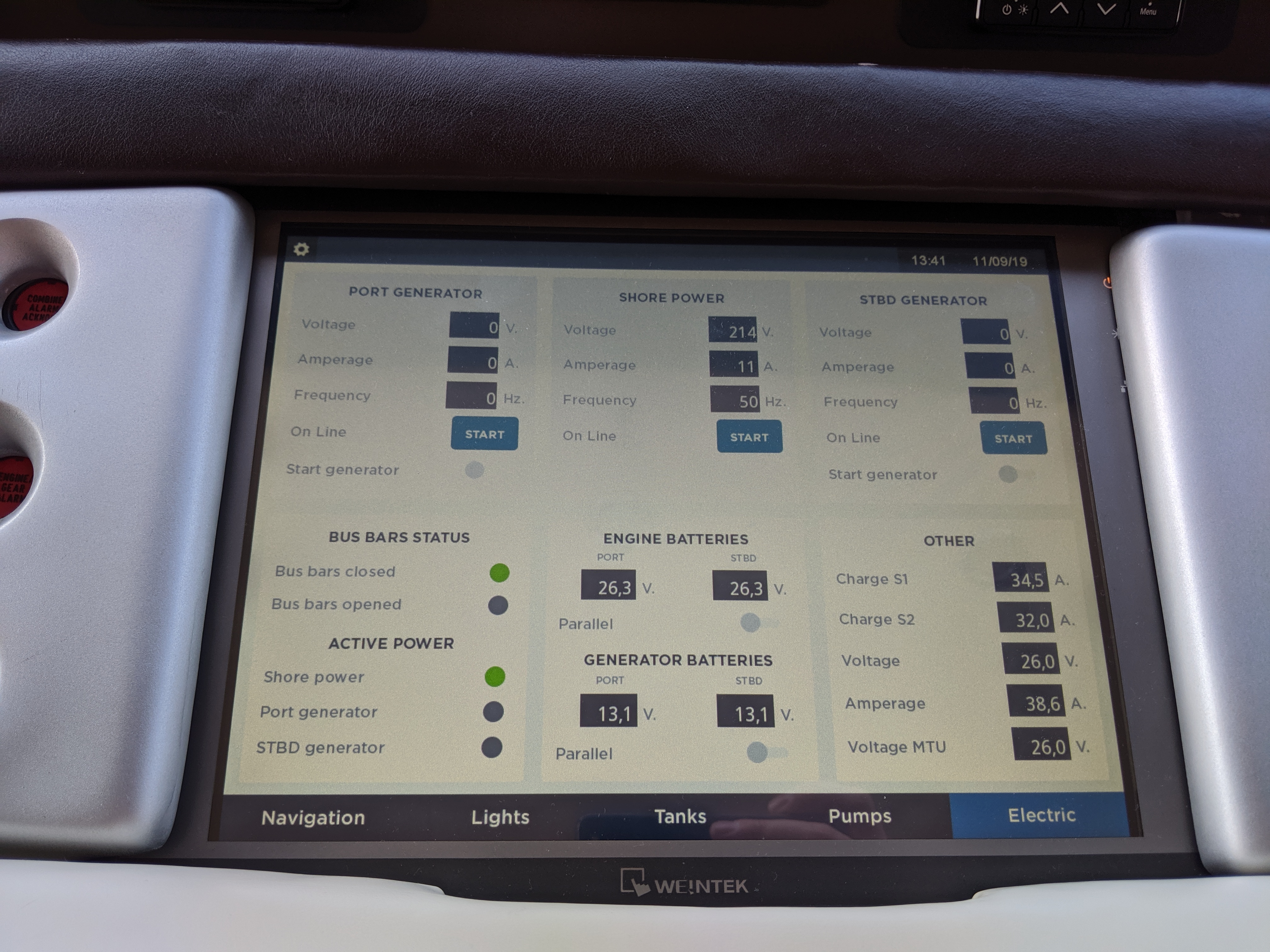

Since we wrote the algorithms for the controller anew, already under the new panel, we immediately made a normal customizable alarm for emergency and pre-emergency events with sound notification. The captain can assign priority to events himself or turn off the notification completely.
Additionally, we changed digital current analyzers on generators, batteries and shore power, now we can transfer more parameters to the panel. The panel itself can archive all this data and upload reports to a USB flash drive.
We also made a special button that blocks any pressing of the screen so that you can wipe it and not be afraid to accidentally press something.
It took us about 3 months to complete all the modernization work, it was necessary to carefully check all possible scenarios of events so as not to cause problems for the client during the flight.
In our portfolio, this is one of the most unusual and interesting cases, there is something to tell about. If you have your own yacht and want to upgrade the onboard systems on it, please contact us, we will work with pleasure!